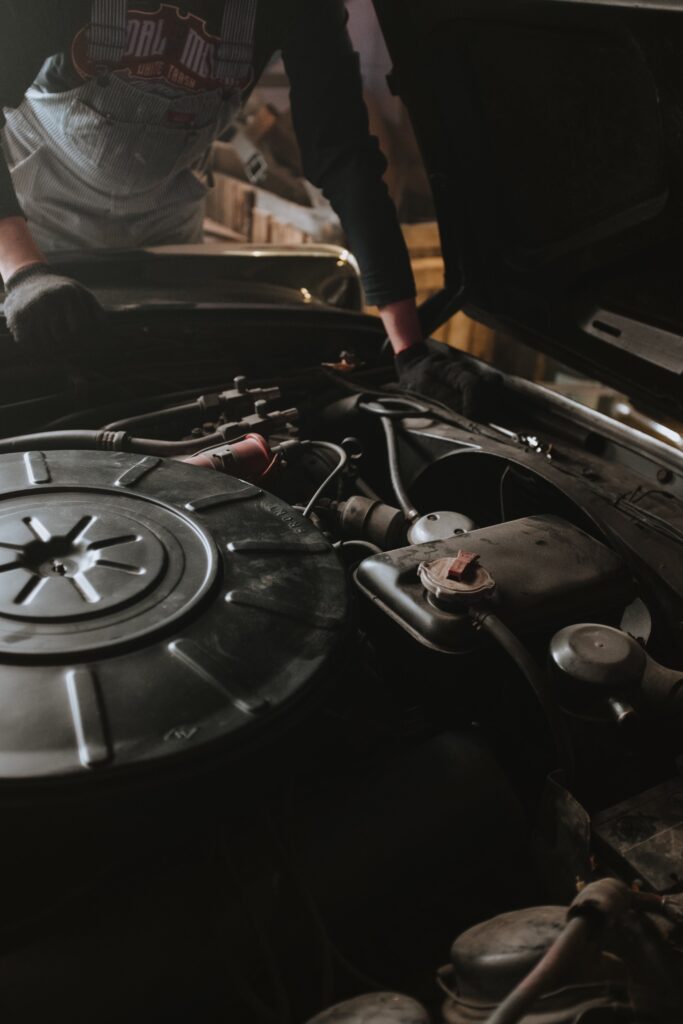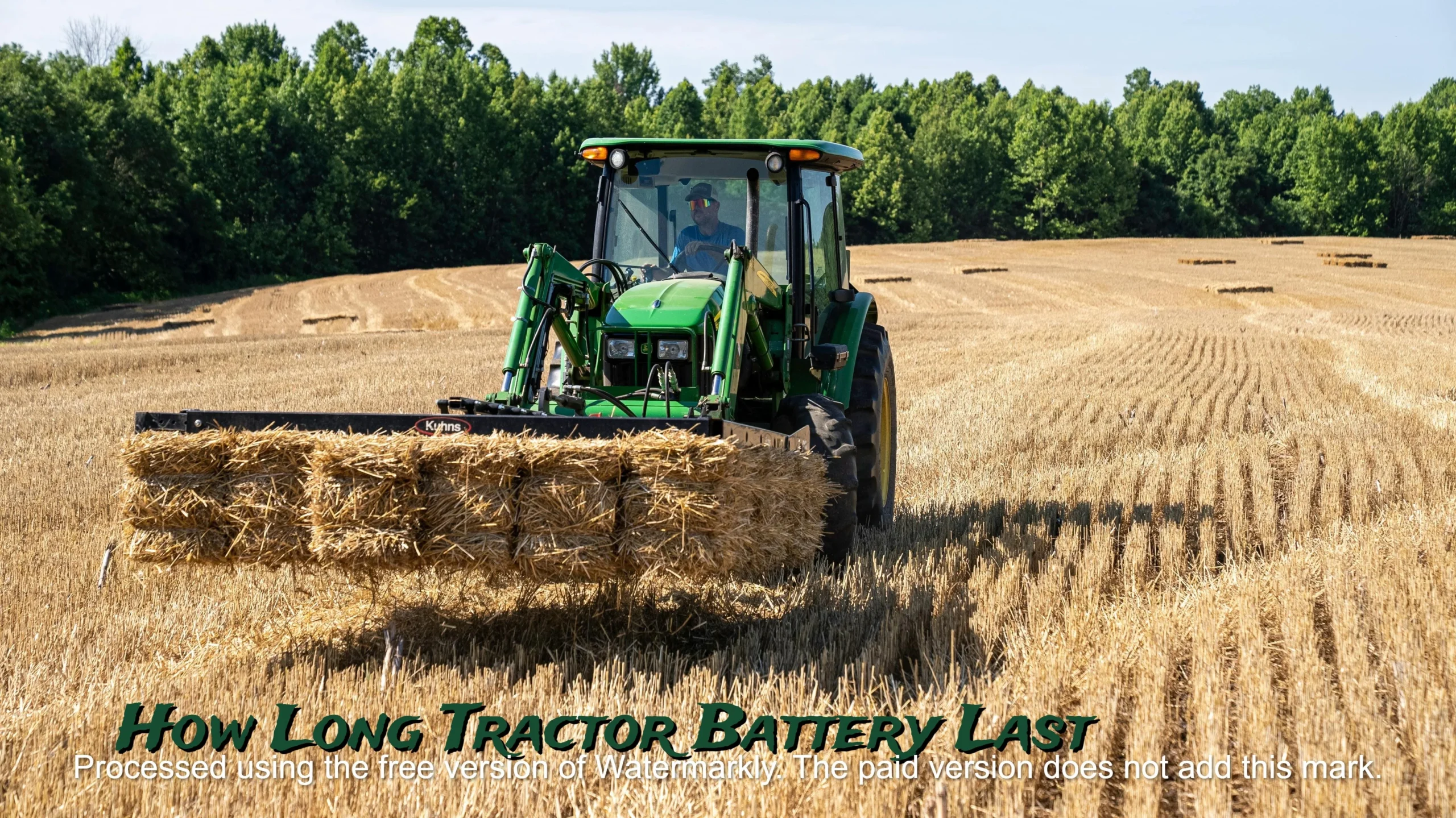Introduction
Tractors rely on batteries to start the engine and power electrical components. Knowing how long your tractor battery will last is important to avoid being caught off guard by an unexpected failure. The lifespan of a tractor battery depends on several factors including battery type, usage, maintenance, and operating conditions.
This comprehensive guide will examine the expected lifespan of different tractor battery types, steps to maximize battery life, signs of a dying battery, and frequently asked questions about tractor battery longevity. With proper care and maintenance, a quality tractor battery can provide years of reliable performance. Read on to learn how to get the most life out of your tractor battery.
Typical Lifespan of Tractor Battery Types
There are three main types of batteries used in tractors:
Standard Wet Cell Lead-Acid Batteries
These traditional flooded batteries are the most common type found in older tractors. They use lead-acid chemistry where sulfuric acid reacts with lead plates to produce power.
- Expected Lifespan: 2-5 years
- Require regular maintenance to check fluid levels and add distilled water as needed. Over time, lead plates will corrode and shed material reducing performance.
Maintenance-Free AGM Batteries
Absorbed Glass Mat (AGM) batteries have the acid immobilized in fiberglass separators between the lead plates. This makes them non-spillable and maintenance-free.
- Expected Lifespan: 4-8 years
- More resistant to vibration with faster recharge times compared to standard wet batteries. Ideal for modern tractors and heavy equipment.
Lithium-Ion Batteries
The newest battery technology using lithium-ion cells instead of lead-acid. Very lightweight with excellent performance.
- Expected Lifespan: 8-12 years
- Holds charge longer, operates in wider temperature range. More expensive currently than lead-acid options.
So in general, a quality tractor battery can be expected to last between 2-12 years depending on the specific type. Proper maintenance and operating conditions have a big impact on actual battery lifespan.

Factors That Shorten or Extend Tractor Battery Life
How long your tractor battery remains working reliably depends on several variable factors:
Usage and Discharge Cycles
Frequent usage and deep discharge cycles will wear a battery down faster. Tractor batteries used every day will have a shorter life than those used only occasionally. Partial discharges are better for battery health rather than being drained down completely.
Operating Temperature
Heat kills batteries. Keeping batteries cool as possible by avoiding direct sun exposure extends lifespan. Lithium-ion batteries tolerate heat better than lead-acid. Cold temperatures reduce cranking power.

Proper Maintenance
Routine maintenance like cleaning corrosion, checking connections, and adding water to flooded batteries will maximize life. Ignoring maintenance leads to failure.
Vibration and Shock
The bumpy ride and vibration of tractors can take a toll on batteries. Poorly secured batteries will fail faster. AGM and lithium-ion batteries withstand vibration better. Using protective mounts helps.
Electrical System Condition
Issues with the tractor charging system, loose connections, dirty terminals, and electrical faults quickly ruin batteries. Quality regulated charging is essential.
Sulfation
Over time, sulfur crystals (sulfation) build up on the lead plates reducing the battery’s ability to hold a charge. This normal aging process shortens lifespan.
By minimizing vibration, maintaining proper charge levels, avoiding extreme heat, and regular upkeep, tractor batteries can achieve their maximum designed life span.

Signs Your Tractor Battery is Dying
Watch for these common indicators that your current battery may be on its last legs:
- Slow cranking when turning ignition key
- Battery needs frequent recharging
- Corroded or damaged terminals
- Cracked or bulging case
- Loss of electrolyte fluid
- Failure to hold charge between uses
- Dimming headlights at idle
- Not performing well in cold weather
Testing battery voltage and load testing can confirm if your battery is still in good health. Most batteries are nearing the end when they drop below 80% of rated capacity.
When to Replace Tractor Battery
It’s recommended to replace your tractor battery every 3-5 years as a preventive measure if you haven’t experienced any issues firsthand. Don’t wait until your battery leaves you stranded in the field.
Some other good times to install a new battery include:
- purchasing a new tractor
- noticing signs of decreased performance
*prepare for busy seasons - before winter sets in
Replacing both batteries at the same time on tractors with dual battery systems keeps them balanced. Mixing old and new batteries is not recommended.
Tips to Maximize Tractor Battery Life
Here are some key maintenance practices that will ensure you get the most life from your tractor batteries:
Clean Terminals and Connections
Keep battery terminals and connections free of dirt, corrosion and oxidation by cleaning every 6 months or as needed. Use a wire brush or sandpaper to remove buildup and wash with a baking soda and water solution. Apply dielectric grease or petroleum jelly to protect terminals. Ensure connections are tight.
Check Fluid Levels
For flooded wet cell batteries, make sure plates are covered by electrolyte fluid. Add distilled water to fill to the proper level if low. Never overfill. AGM and lithium batteries are sealed and maintenance-free.
Charge Regularly
Keep batteries fully charged when not in use to prevent sulfation buildup. Use a smart charger that provides a low amperage float charge. If a tractor sits unused for weeks, give the battery a full recharge monthly. Never leave batteries discharged.
Store Properly
When storing a tractor long term, remove batteries and store them indoors in a cool place. Bring to a full charge first and recharge every 2-3 months during storage. Keeping batteries at a 40-50% charge is ideal for storage.
Use a Maintenance Charger
Avoid having to constantly recharge your battery by connecting a maintenance charger when parked. This provides a continuous low current to keep the battery at 100% charge without overcharging. Keeps plates sulfation-free.
Upgrade If Needed
If your current batteries are requiring very frequent recharging, have trouble starting, or appear damaged, it may be time for new ones. Upgrading to maintenance-free AGM or lithium batteries can improve longevity and performance.
With proper care, even inexpensive standard wet cell batteries can provide reliable service for several years on a tractor. Following these maintenance tips will keep your batteries running strong.

Odyssey: Known for making high quality AGM batteries that can withstand vibration and deep cycling. More expensive but come with long warranties up to 4-10 years. Excellent for heavy equipment with dual battery systems.
Optima: Another leading AGM battery maker popular for tractors and RVs. Their “yellow top” and “red top” batteries are proven performers. Tend to be pricier than competitors. Backed by a strong 15-year warranty.
DieHard: Offered by Sears, their Gold AGM line is built tough for agricultural use. Reasonably priced with good warranties from 3-7 years. Solid mid-range option.
Deka: Established brand for heavy-duty equipment applications. Their Intimidator line comes in wet cell and AGM versions with 400+ cold cranking amps. Designed for demanding conditions. Cost effective.
Universal Power Group: Manufacture wet cell and AGM batteries under various brands like Genesis and Amstron. Known for high CCA ratings and vibration resistance. Value oriented tractor batteries.
EnerSys: Make Odysseus and Odyssey Extreme series batteries specifically engineered for agricultural and construction vehicles. Packed with features and power. Premium performer but expensive.
For most farmers, a mid-range AGM battery from Optima, DieHard, or Deka offers the best bang for your buck. Odyssey is worth the investment for those seeking maximum longevity in extreme conditions. Regular wet cell batteries work fine for light duty and hobby applications if properly maintained. Do your research to choose reliable batteries from a reputable brand that fits your budget.
Conclusion
In summary, several factors determine how long a tractor battery will provide reliable service. Standard wet cell batteries may only last 2-3 years, while high-end AGM or lithium models can function over 10 years. Most farmers can expect at least 5 good years from a quality battery by following proper maintenance procedures.
Watch for signs of a failing battery like difficulty starting, loss of capacity, and corrosion buildup. Be proactive with cleaning connections, checking fluid levels, recharging after use, and storage. Investing in a rugged AGM or lithium battery from a trusted brand is wise for heavy duty or commercial operations. Apply these battery health practices and your tractor will keep running season after season.
Frequently Asked Questions
How long should a tractor battery last?
The typical lifespan of a tractor battery is:
- Standard wet cell lead-acid battery: 2-5 years
- AGM Maintenance-free battery: 4-8 years
- Lithium-ion battery: 8-12 years
With proper maintenance and operation, most quality tractor batteries will provide at least 3-5 years of service. Extreme heat, deep discharges, vibration, and lack of maintenance will shorten battery life.
What kills tractor batteries?
Four key factors lead to premature death of tractor batteries:
- Heat – High temperatures accelerate failure of lead-acid batteries. Keep batteries as cool as possible.
- Vibration – The shaking and bouncing of tractors can damage batteries internally over time. Use shock-absorbing mounts.
- Undercharging – Not recharging thoroughly allows lead sulfate crystals to form on the plates ruining performance.
- Electrical issues – Problems with alternator output, loose connections, and shorts quickly destroy batteries.
How can I prolong my tractor battery life?
- Clean terminals & check connections every 6 months
- Make sure fluid levels are correct on wet cell batteries
- Recharge fully after each use
- Avoid deep discharges below 50% capacity
- Keep batteries cool – away from direct sun
- Install on shock-absorbing mounts
- Use a maintenance charger when parked
- Check charging system for proper voltage
How do I know when to change my tractor battery?
Signs it’s time to replace the battery include:
- Slow cranking and hesitation starting
- Dimming or flickering lights
- Need to recharge more frequently
- Corroded/loose terminals
- Cracked or leaking case
- Loss of fluid in wet cell batteries
- Failure to hold a charge
Any battery more than 5 years old that is showing degraded performance should be replaced.
Should I disconnect my tractor battery when not in use?
- Only disconnect the battery cables if the tractor will be stored unused for more than 2 months. Otherwise, use a maintenance charger to keep the battery at 100% charge when parked.
- Always disconnect the negative (ground) cable first and reconnect it last to avoid shorts.
- Make sure to recharge the battery before reconnecting if stored disconnected.
